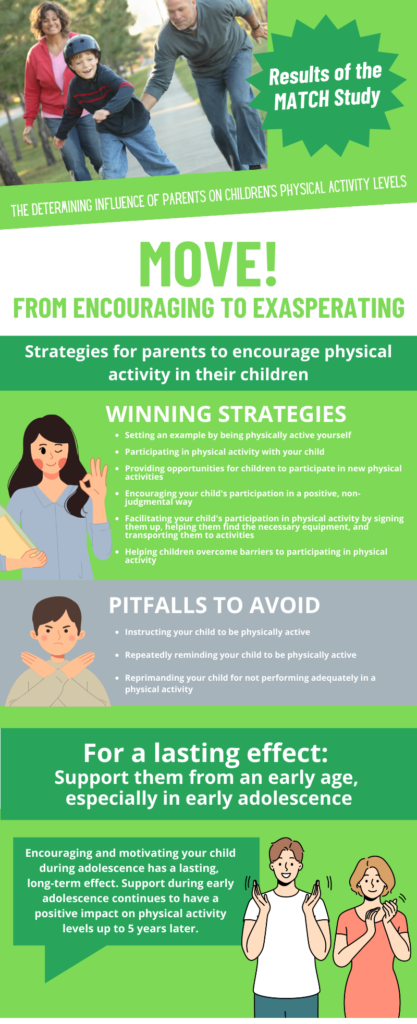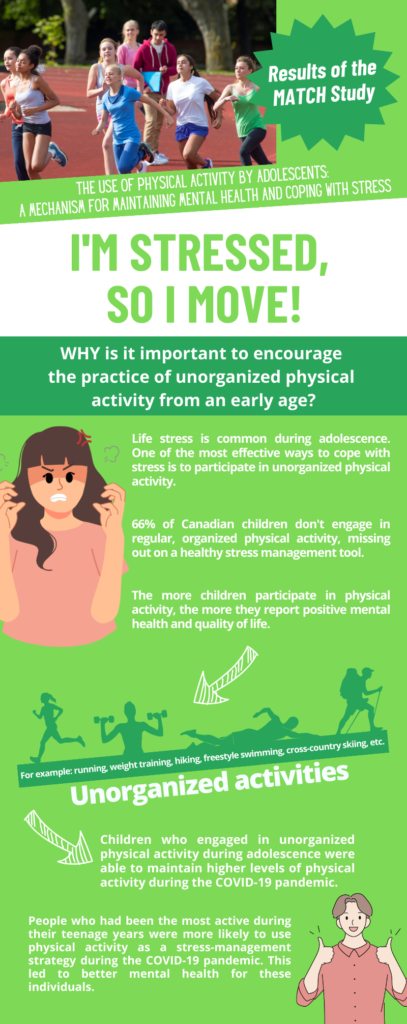MATCH – Key Findings to Date
Since 2011, MATCH data have been at the heart of 12 graduate student theses and 6 postdoctoral projects. Analyses conducted by researchers and students have led to the publication of over 30 scientific papers, 67 presentations at scientific conferences and 16 presentations where MATCH researchers were guest lecturers.
THE IMPORTANCE OF PRACTICING A VARIETY OF PHYSICAL ACTIVITIES
Children who take part in a wide variety of sports are more likely to pursue participation in physical activity as they become adolescents. In contrast, children who specialize into a sport are at greater risk of dropping out of sports when they get older.
Gallant, F., O’Loughlin, J., Brunet, J., Sabiston, C., Bélanger, M. (2017) Pediatrics
Five distinct sport participation profiles emerged from the analysis of MATCH data: “non-participants”, “unorganized activities only”, “single-sport low frequency”, “single sport high frequency”, and “multi-sport”. Only “multi-sport” participants were unlikely to be classified as “non-participants” over time. Encouraging multi-sport participation might help protect against later non-participation.
Gallant, F., Murray, R. M., Sabiston, C. M., & Bélanger, M. (2022) Journal of Sports Sciences
THE DETERMINING EFFECT OF PARENTS ON CHILDREN’S PHYSICAL ACTIVITY LEVELS
Youth with at least one parent who participates in interdependent sports are more likely to maintain participation in interdependent sports. Youth’s sustained participation in coactive/independent sports was not associated with parents’ participation in coactive/independent sports.
Brunet, J., Gaudet, J., Wing, E., Bélanger, M. (2017) Journal of Sport and Health Science
Perceived tangible parental support was positively associated with self-efficacy and enjoyment of physical activity, and perceived intangible parental support was positively associated with the enjoyment of physical activity. Self-efficacy beliefs and enjoyment of physical activity were positively associated with participation in physical activity in- and out-of-school.
Wing, E.K., Bélanger, M., Brunet, J. (2016) American Journal of Health Behavior
Parental support for PA, particularly in the form of tangible support, may be a key factor to include in interventions aiming to promote PA during adolescence. In contrast, parents should be encouraged to avoid control behaviours as these appear to lead to lower MVPA among adolescents.
Doggui, R., Gallant, F., & Bélanger, M. (2021) International Journal of Behavioral Nutrition and Physical Activity
THE INFLUENCE OF BODY IMAGE AND WEIGHT-RELATED GOALS ON ADOLESCENTS’ LIFESTYLE HABITS
Adolescents who report being stressed or worried about their weight are relatively more likely to report wanting to lose weight. Teens who say they want to lose weight generally report poorer lifestyle habits such as more screen time, less physical activity, and more consumption of sugary drinks.
Thibault, V., Gallant, F., Sylvestre, M.P., Drapeau, V., Doré, I., Sabiston, C., Bélanger, M (in press)
Doggui, R., Ward, S., Johnson, C., Bélanger, M. 2022. Appétit ; Doggui, R., Ward, S., Johnson, C., Bélanger, M. (2021) Nutriments.
Higher levels of shame, guilt and embarrassment related to body image are linked to a decline in physical activity; Higher levels of pride in body image linked to higher levels of physical activity throughout adolescence.
Sabiston, C.M., Doré, I., Lucibello, K.M., Pila, E., Brunet, J., Thibault, V., Bélanger, M. (2022). Journal of Adolescent Health, Social Science & Medicine
Abi Nader, P., Ward, S., Eltonsy, S., Bélanger, M. (2018) Preventive Medicine
THE USE OF PHYSICAL ACTIVITY BY ADOLESCENTS: A MECHANISM FOR MAINTAINING MENTAL HEALTH AND COPING WITH STRESS
Life stresses perceived by adolescents are often associated with an increase in participation in non-organized sports, suggesting that these activities represent a solution to romantic break-ups, bereavement and a lack of parental support.
Abi Nader, P., Ward, S., Eltonsy, S., & Bélanger, M. (2018) Preventive Medicine
Both recreational and performance sport participation profiles in childhood and early adolescence are positively associated with positive mental health in late adolescence.
Doré, I., Sabiston, C. M., Sylvestre, M. P., Brunet, J., O’Loughlin, J., Nader, P. A., Gallant, F., & Bélanger, M. (2019) Journal of Adolescent Health
The occurrence of life stresses often results in increases in levels of participation in unorganized sports, suggesting that these activities represent a solution to deal with adversities such as breakups, grievances and low parental support. Doré, I., Sylvester, B., Sabiston, C., Sylvestre, M. P., O’Loughlin, J., Brunet, J., & Bélanger, M. (2020) International Journal of Behavioral Nutrition and Physical Activity
PARTICIPATION IN PHYSICAL ACTIVITY VARIES ACCORDING TO DIFFERENT MOTIVES
Children who report taking part in physical activity because they enjoy it, typically take part in more organized physical activity. Children who want to be active to improve their skills often take part in group-based physical activity and are more likely to attain the recommended levels of physical activity every day.
Goguen, J., Bélanger, M., Xhignesse, M., Ward, S., Sabiston, C., O’Loughlin, J. (2015). International Journal of Sport and Exercise Psychology
There are internal (ex: “I am not interested in physical activity”) and external barriers (ex: “I do not have the equipment I need”) to physical activity but only internal barriers are susceptible to keep youth away from physical activity.
Gunnell, K.E., Brunet, J., Wing, E.K., Bélanger. (2015) Pediatric Exercise Science
There are theories suggesting that humans need to be satisfied to live a happy life. For example, the theory says that one needs to have positive social interactions during physical activity as well as positive feelings of competence and finally, feelings of autonomy such as being able to do what you want when you want to. MATCH researchers found that the more these needs were satisfied over time, the more active people were. Also, when physical activity increases as a result of better satisfaction of these psychological needs, we found that quality of life improves. And that is whether we think of the quality of life from a physical or a social perspective.
Gunnell, K. E., Brunet, J., & Bélanger, M. (2016) Health Psychology
Gunnell, K. E., Brunet, J., Sabiston, C. M., Bélanger, M. (2016) Journal of Sport & Exercise Psychology
Brunet J., Gunnell, K. E., Teixeira, P., Sabiston, C. M., Bélanger, M. (2016) Journal of Sport & Exercise Psychology
From late childhood to middle adolescence, for boys, enjoyment motives were positively, while fitness motives were negatively associated with physical activity. Whereas, for girls, competence motives were associated with physical activity. Boys may benefit from interventions, if these were primarily aimed at increasing ones’ enjoyment, whereas developing a girl’s competence may provide greater contributions to a girl’s future physical activity behaviours. Physical activity interventions should avoid promoting the desire to be active to improve fitness, particularly among boys.
Abi Nader, P., Gaudet, J., Brunet, J., Gunnell, K. E., Doré, I., Sabiston, C. M., Boudreau, J., & Bélanger, M. (2021) Journal of Sports Sciences
The IMPACTS Laboratory generates knowledge about healthy lifestyles to reduce the burden of chronic disease.






